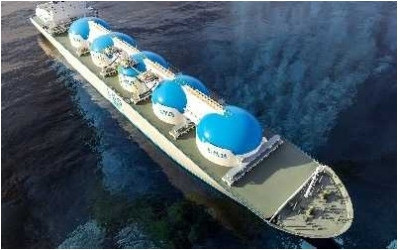February 20, 2021

As remote work and virtual recruiting have become the new normal, businesses in all industries are facing tough competition to secure the market’s top talent. 70% of the global workforce is made up of passive talent, not to mention the increased focus on stability and security that professionals have in the Covid-19 era. Therefore, it remains difficult for organisations to identify, attract and retain the best candidates. Retrenchments have led to more talent on the market, so now is the time to consider whether they can add value to your organisation. With so many candidates in the market right now, it isn’t always easy to find what you’re looking for. So, here’s how you attract and hold onto the best people in oil, gas and energy.
Know your company’s mission
Business leaders and hiring managers have long reported challenges attracting the market’s most qualified candidates. This is particularly pronounced in the SME market, with 64.2% of small businesses reporting they struggle to attract qualified talent. According to research by One Rec, 81.5% of recruitment professionals said that a lack of relevant candidates was impacting their recruitment efforts. While business priorities may have changed for many due to Covid-19, businesses with industry-leading professionals will be best placed to meet these challenges moving forward.
Many organisations have had to flex, reduce or restructure as a result of the pandemic and the corresponding economic downturn. Your resourcing requirements no doubt look very different from how they did before the outbreak. Contractor mobilisation and the supply chain have both been impacted, creating more challenges for businesses. Now is the time to understand your company’s mission and values, and identify roles you need to move your organisation forward. Whether that’s looking for tech talent to bridge the digital skills gap or introducing a new HSE position to remain compliant with Covid-19 policies, take the opportunity to rethink what roles make up your business.
It’s essential you foster a mission-driven company, as it can improve employee engagement – and regardless of the skills you identify, make sure that diversity and inclusion plays a part in any future talent attraction strategy. Gender diversity in particular is a chief concern for the oil, gas and energy, so ask your recruitment partner how they can help you with diverse searches.

Develop your employer brand
Your employer brand plays a significant role in how appealing you are to top candidates. It serves as the identity of your company and the internet and social networking sites have made it easier than ever for professionals to find information about what it’s like to work for an organisation. It’s been found that nine out of ten candidates are more likely to apply for a job with an employer whose brand has been actively maintained. This means that it’s all the more important to define the message of your company and nurture your culture. That way, you’ll be able to give candidates a stronger perception of your brand. Whether that’s by overhauling your social media pages, asking employees for honest feedback, or developing your website to feature more company benefits, you need to add depth and show that your company is an excellent place to work.
Build a great candidate and employee experience
Speaking of culture and benefits, you need to think about what would make industry-leading talent consider changing jobs. While salary will always be a key factor, the current climate means organisations may no longer have the budget to compete on salary. If this is the case, focus on other top factors for professionals, such as company culture, benefits and flexibility. In today’s competitive market, it’s all the more important that you anticipate candidate and employee needs. For example, start developing meaningful relationships during the recruitment process by delivering clear communication about onboarding timelines, and the requirements of the role. Providing a positive candidate experience is crucial to attracting the best talent and making successful placements. It’s been found that people who are pleased with their candidate experiences are 38 per cent more likely to accept a job offer.
Stability will also be increasingly important in the coming months and years as the market continues to respond to Covid-19. Longer contracts, help with mobilisation, permanent positions and employer support will all be more appealing to candidates, as will company culture. Glassdoor reports that 93% of employees mention company culture in their reviews, suggesting this is a critically important factor in both attracting new people and retaining current employees. It’s all the more important then, that you focus on maintaining a positive workplace culture where employees understand how they can add value and be successful. The key to retainment is building healthy relationships with your employees from day one.
Work with the right partners
Identifying, attracting and securing the market’s best talent takes time, effort and resources. A specialist recruitment partner is best placed to support you through this, particularly as the market continues to ebb and flow with the pandemic. An outsourced partner will work as an extension of your business, taking the time to build long-term relationships with you and truly understand not only what you need from your people, but also what makes you unique as an employer. This allows consultants to position your business in the best possible way to the best possible candidates.
Whether you’re looking for drilling and well engineers or executive-level leaders, Petroplan can help. We’ll work with you to tap into new talent pools, identify the best solutions for your business and ensure you’re attracting the best candidates in the industry. Find out more about our client services here or contact us to start a conversation. We look forward to hearing from you soon.






You can also use your social account to sign in. First you need to:
To connect your social account you must Acknowledge the Terms & Conditions and Privacy Policy